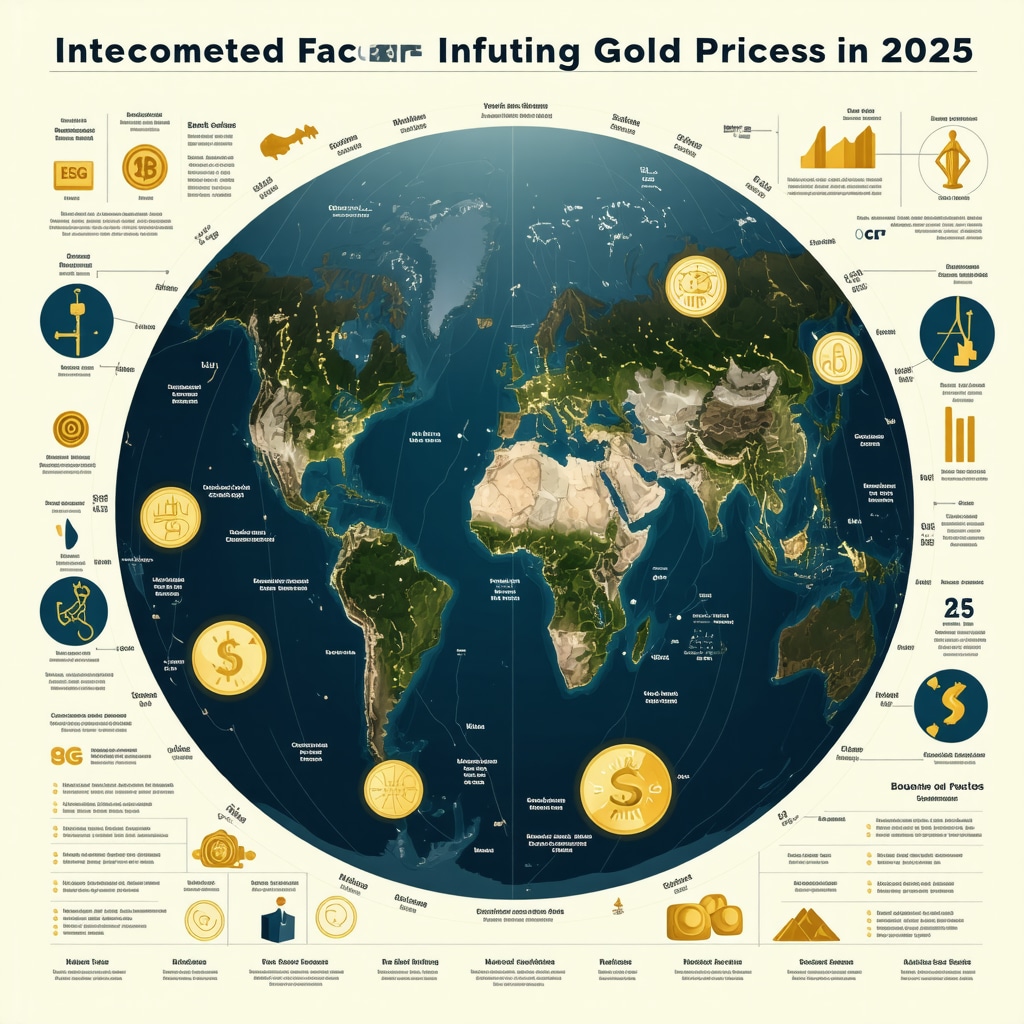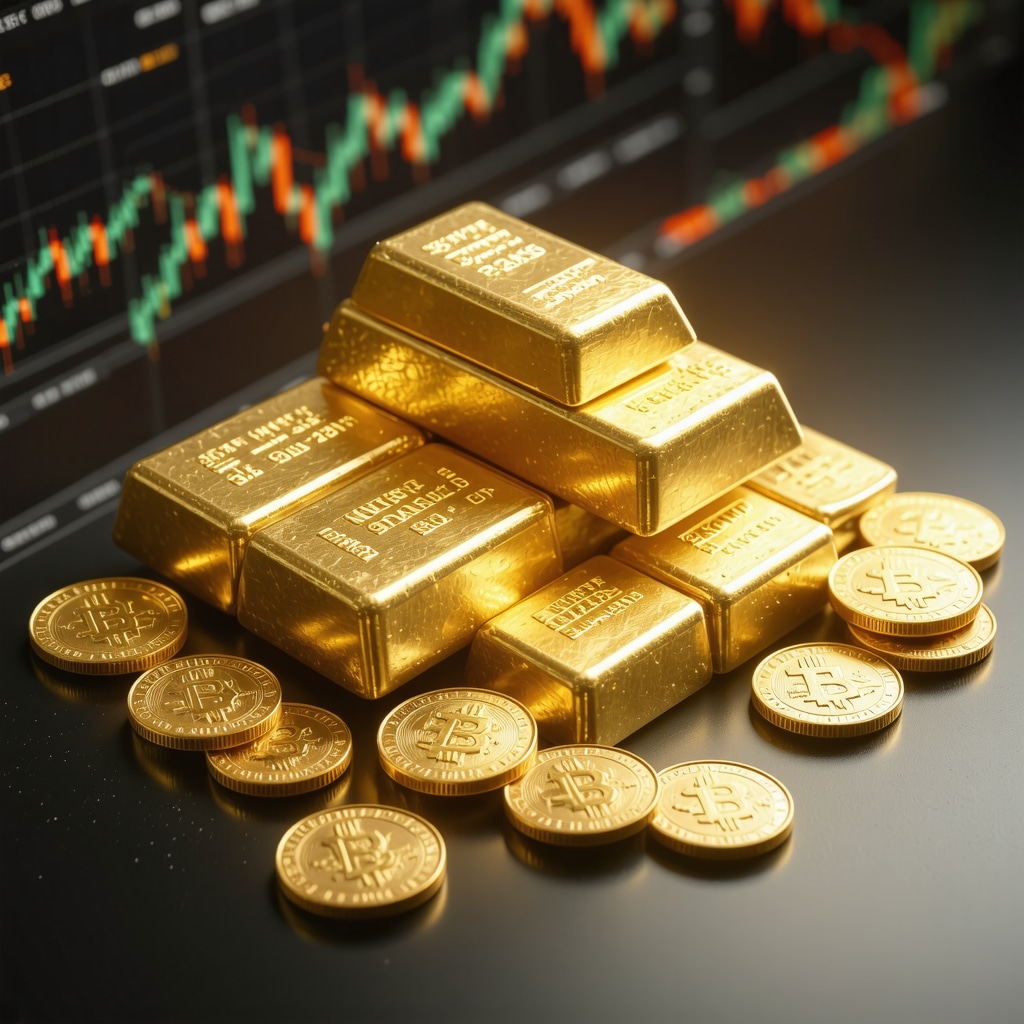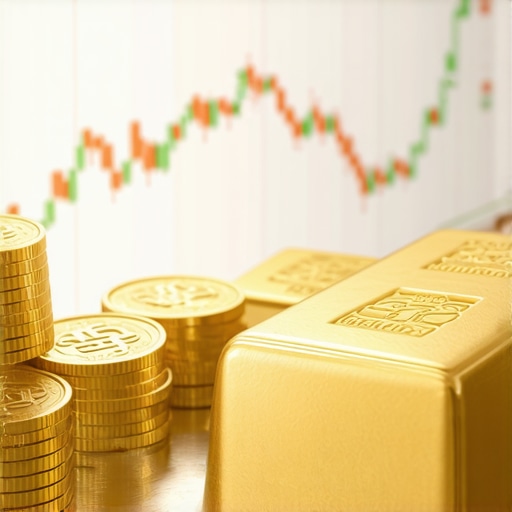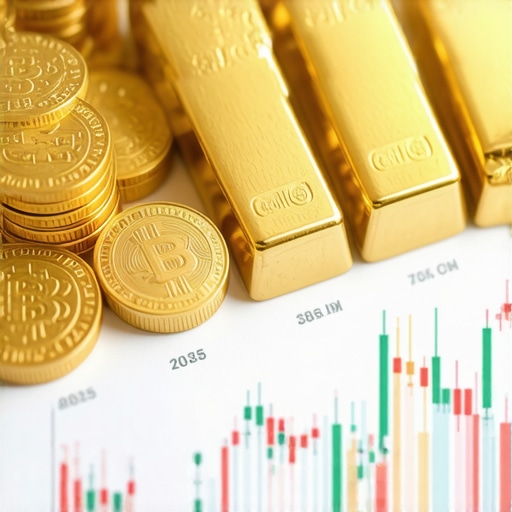Gold Investment: The Classic Treasure Hunt with a Modern Twist
Ah, gold – that timeless glittering metal that’s as captivating today as it was in King Midas’s day. But if you’re thinking investing in gold is as simple as buying a shiny nugget and stashing it under the mattress, think again. The world of gold investments is a dazzling labyrinth packed with options: bars, coins, and futures. Each has its own flair, risks, and rewards, and knowing the difference can make all the difference in your portfolio’s sparkle.
Bars and Coins: The Tangible Glamour of Physical Gold
Let’s start with the classics. Gold bars and coins are the physical embodiments of wealth – something you can hold, admire, and yes, even show off at your next dinner party. Bars typically come in various sizes, from hefty kilos to petite grams, offering flexibility depending on your budget. Coins, on the other hand, often carry numismatic value beyond just their gold content, especially if they’re rare or collectible.
However, physical gold isn’t without its quirks. Storage and security can become a headache, and there’s the ever-important task of buying from trusted dealers to avoid fakes. For those curious about safe storage and how to sidestep common pitfalls, this guide on physical gold investment tips is a treasure trove.
Is Owning Physical Gold Still Worth the Hassle in a Digital Age?
With the rise of digital gold and ETFs, why bother with physical bars and coins? The answer lies in tangibility and control. Nothing beats the peace of mind knowing you possess actual gold, immune to cyber risks or platform failures. Yet, it’s a trade-off – physical gold demands vigilance and sometimes even a bit of paranoia about security.
Futures: Playing the Gold Market Chess Game
Now, if you’re more of a strategist than a collector, gold futures might be your playground. These are contracts to buy or sell gold at a predetermined price on a future date, allowing savvy investors to hedge or speculate. Futures can magnify gains but also amplify losses – it’s a high-stakes game best played with a seasoned advisor or a solid understanding of market dynamics.
For those intrigued by the nitty-gritty of futures trading and how to trade for profit in 2025, this resource offers an excellent primer.
Why Does Gold Always Spark Such Fascination?
Is it the shimmering allure or its reputation as a safe haven in economic storms? According to the World Gold Council, gold’s unique combination of scarcity, durability, and universal appeal has cemented its role in global finance for centuries.1 Whether you’re clutching a coin or trading futures, gold remains a beacon for those seeking stability amidst market turbulence.
So, dear reader, what’s your golden strategy? Are you a hands-on collector dazzled by coins and bars, or a risk-savvy trader eyeing futures? Share your thoughts and experiences below – after all, in the glittering world of gold, every perspective adds a new facet to the story.
The Digital Evolution of Gold Investment: Beyond Bars and Coins
While physical gold carries undeniable charm and security, the surge in digital gold platforms and gold-backed ETFs has transformed how investors engage with this precious metal. Digital gold offers unparalleled liquidity and ease of transaction, often with lower entry barriers than buying physical bars or coins. However, this convenience comes at the cost of relinquishing direct ownership, which can be a psychological hurdle for traditionalists.
For those interested in diversifying with gold ETFs and stocks, learning how to build a diversified portfolio can significantly enhance risk management and potential returns. Our detailed guide on building a diversified portfolio with gold ETFs and stocks is an invaluable resource for navigating these options.
Central Banks and Their Influence: The Invisible Hand on Gold Prices
One often overlooked yet pivotal player in the gold market is the central bank. Their gold purchasing behavior can dramatically sway global demand and price dynamics. Central banks use gold as a reserve asset to hedge against currency fluctuations and economic uncertainty, which in turn impacts market sentiment and investor behavior.
Understanding these moves is essential for anticipating price trends. For an in-depth analysis, this exploration on how central bank gold purchases affect global markets provides expert insights into their strategic influence.
How Do Central Bank Gold Purchases Shape Investor Strategies in 2025?
Given the increasing frequency of central bank gold acquisitions, investors must ask: How should these macroeconomic signals influence personal investment decisions? Recognizing the timing and scale of these purchases can inform smarter entry and exit points in both physical and digital gold markets. Anticipating central bank trends offers a competitive edge, especially in volatile economic climates.
According to recent analysis by the World Gold Council, central bank buying remains a significant driver of the gold market, with purchases in emerging economies contributing notably to demand growth.1 This underscores the importance of integrating macro-level data into individual investment strategies.
Smart Storage Solutions: Safeguarding Your Golden Assets
Whether you choose physical gold or digital forms, securing your investment is paramount. For physical gold holders, options range from home safes to professional vault storage, each with distinct cost-benefit profiles. Trusted dealers often provide secure storage services, alleviating some security concerns and preserving liquidity.
Exploring the best physical gold storage solutions can minimize risks associated with theft or damage. For comprehensive safety tips, this guide offers practical advice tailored for investors.
We invite you to share your preferred gold investment strategies or ask questions about navigating the evolving gold landscape. Your insights and queries enrich the community’s understanding and help us all shine brighter in the realm of precious metals.
Decoding Gold’s Role in Inflation Hedging: A Sophisticated Analysis
Gold has long been heralded as a quintessential hedge against inflation, but the relationship is far from linear or guaranteed. In fact, its effectiveness can fluctuate depending on the nature of inflationary pressures, monetary policies, and geopolitical factors. Unlike traditional assets, gold’s intrinsic value isn’t tied to cash flows or earnings, making it uniquely positioned to preserve purchasing power during periods of currency debasement. Yet, savvy investors must understand that gold’s inflation-hedging prowess is influenced by real interest rates, dollar strength, and even market sentiment.
For example, when real interest rates turn negative, gold often surges because it costs less to hold a non-yielding asset. Conversely, rising rates can dampen gold’s appeal. According to the Federal Reserve Economic Data (FRED), periods of negative real yields have historically correlated with gold price spikes, illustrating the metal’s nuanced dance with macroeconomic variables.2
What Advanced Indicators Should Investors Monitor to Predict Gold’s Response to Inflation?
Beyond headline inflation metrics, sophisticated investors track indicators such as the breakeven inflation rate derived from Treasury Inflation-Protected Securities (TIPS), currency strength indices, and central bank communications. These provide forward-looking insights into inflation expectations and monetary tightening cycles, both of which critically influence gold prices. Incorporating these signals into quantitative models can refine timing for gold acquisition or liquidation, optimizing portfolio resilience.
The Interplay Between Gold and Emerging Market Economies: A Closer Look
Emerging markets are increasingly pivotal in shaping global gold demand, not merely as consumers but also as producers and holders of reserves. Countries like India and China dominate physical gold consumption driven by cultural affinity and investment demand, while nations such as Russia and Brazil influence supply dynamics through mining output.
This dual role creates a complex feedback loop: rising gold prices can stimulate mining investments, influencing supply, while economic and political developments in these regions affect purchasing behaviors. Moreover, emerging market central banks have stepped up gold purchases as part of diversification strategies to reduce dollar dependency, further tightening global supply.
Understanding these geopolitical and economic entanglements requires investors to monitor trade policies, currency stability, and sovereign debt profiles within these countries. The International Monetary Fund’s reports on emerging market economies provide valuable context for these trends.3
Innovations in Gold Investment Products: Navigating Tokenization and Blockchain Integration
The advent of blockchain technology has birthed a new frontier in gold investment: tokenized gold assets. These digital tokens represent fractional ownership of physically stored gold, marrying traditional asset security with blockchain’s transparency and liquidity advantages. Tokenization allows investors to bypass conventional barriers such as large minimum investments and storage complexities, democratizing access.
However, this innovation also introduces novel risks, including regulatory uncertainty, custody challenges, and counterparty risks inherent in digital platforms. Due diligence on token issuers’ credibility, audit transparency, and underlying physical gold storage is critical. Regulatory bodies worldwide are beginning to offer clearer frameworks, with jurisdictions like Switzerland leading the way in embracing tokenized commodities.
For investors keen to explore this space, balancing the allure of technological innovation with prudent risk management is paramount. Detailed whitepapers from blockchain gold investment platforms can offer deeper insights into operational and legal safeguards.
How Can Investors Mitigate Risks Unique to Tokenized Gold Investments?
Mitigation strategies include selecting tokens backed by fully allocated physical gold with regular third-party audits, ensuring the platform’s compliance with anti-money laundering (AML) and know your customer (KYC) regulations, and diversifying holdings across multiple providers. Additionally, investors should remain vigilant about smart contract vulnerabilities and maintain custody of private keys securely.
As the gold investment landscape evolves, staying informed and adaptable remains the cornerstone of success. We encourage you to delve deeper into these advanced strategies and share your experiences or questions about integrating traditional and digital gold assets into your portfolio.
Gold and Geopolitical Tensions: The Subtle Market Shifts Investors Must Decode
Gold’s glitter doesn’t just captivate because of its innate value; its price movements often mirror the pulse of global geopolitics. In volatile times, such as escalating trade wars, regional conflicts, or sanctions, gold tends to surge as investors flock to its safe-haven status. Yet, the complexity lies in discerning whether these geopolitical shocks will trigger transient spikes or longer-term demand shifts.
For instance, the 2023 and early 2024 geopolitical landscape, ranging from Eastern European conflicts to supply chain disruptions in key gold-producing regions, has introduced nuanced price volatility. Investors looking to capitalize on these patterns must blend geopolitical risk assessment with traditional market analysis. The latest insights on gold demand trends in 2025 provide a refined framework to weigh geopolitical catalysts against broader economic indicators.
How Can Sophisticated Investors Integrate Geopolitical Intelligence into Gold Portfolio Management?
Advanced investors leverage geopolitical intelligence by monitoring real-time developments alongside macroeconomic data to time their gold acquisitions or liquidations strategically. This includes using scenario analysis to anticipate central bank reactions or shifts in consumer demand in emerging markets affected by geopolitical upheavals. Combining such intelligence with tools like gold futures contracts or ETFs can enable flexible positioning to hedge against or profit from geopolitical uncertainties.
Gold IRA Accounts: A Strategic Long-Term Wealth Preservation Vehicle
Amid rising interest in retirement security, Gold IRAs have emerged as pivotal instruments for incorporating gold’s inflation protection into tax-advantaged retirement portfolios. These accounts allow investors to hold physical gold or gold-backed assets within an IRA framework, blending tax efficiency with diversification.
Choosing the right custodian and understanding IRS regulations are critical. For those exploring this avenue, our comprehensive guide on why Gold IRAs are a top choice for long-term wealth protection details best practices and pitfalls to avoid.
Deciphering Gold Price Volatility: Beyond the Headlines
While gold is often characterized as a stable store of value, its price exhibits notable volatility influenced by multifaceted factors such as currency fluctuations, bond yields, and speculative trading. The interplay between the US dollar strength and gold prices exemplifies this dynamic; a stronger dollar typically exerts downward pressure on gold, yet exceptions occur based on investor sentiment and macroeconomic surprises.
Seasoned investors observe that volatility also arises from shifts in market liquidity and algorithm-driven trading strategies impacting short-term price swings. Understanding these drivers is essential for timing entry and exit points effectively. The 2025 gold price forecast provides a detailed breakdown of these complex interrelations.
What Sophisticated Analytical Tools Best Capture Gold’s Price Volatility for Strategic Trading?
Quantitative models incorporating volatility indices, moving averages, and technical indicators like Bollinger Bands and Relative Strength Index (RSI) can offer nuanced insights into gold’s price momentum and potential reversal points. Furthermore, integrating sentiment analysis from geopolitical news and central bank communications can enhance predictive accuracy. Investors combining these tools with a disciplined risk management framework are better positioned to navigate gold’s ebbs and flows.
Exploring Environmental, Social, and Governance (ESG) Factors in Gold Mining Investments
As ESG considerations gain prominence, gold mining companies face increasing scrutiny regarding sustainable practices, community engagement, and environmental impact. Investors keen on ethical portfolios now evaluate mining stocks not only on financial metrics but also on ESG scores and certifications.
Mining firms adopting responsible sourcing and transparency initiatives tend to attract premium valuations and long-term investor confidence. For a deeper dive into sustainable gold investments, our resource on top gold mining stocks to watch in 2025 highlights companies leading this charge.
We invite you to share your thoughts or questions about integrating geopolitical analysis, Gold IRAs, volatility tools, or ESG factors into your gold investment strategy. Engaging with this community enriches our collective expertise and helps illuminate the multifaceted world of gold investing.

Expert Insights & Advanced Considerations
Gold’s Multifaceted Role Demands Dynamic Portfolio Integration
In 2025, gold no longer serves solely as a static safe haven; it plays a dynamic role across diversified portfolios. Integrating physical gold, ETFs, futures, and tokenized assets thoughtfully can optimize risk-adjusted returns. Savvy investors understand that blending these vehicles requires monitoring macroeconomic indicators like central bank purchases, real interest rates, and geopolitical tensions to time entries and exits effectively.
Central Bank Activity as a Leading Indicator Rather Than a Lagging Signal
Central banks’ gold acquisition patterns often foreshadow broader market shifts. Rather than merely reacting to economic changes, these institutions strategically accumulate gold to hedge against currency volatility and geopolitical risks. Investors who proactively incorporate data from central bank gold purchase analyses gain an informational edge, enabling more precise positioning in physical and digital gold markets.
Tokenization and Blockchain: Revolutionizing Accessibility While Demanding Vigilance
The rise of tokenized gold assets introduces liquidity and fractional ownership unprecedented in traditional markets. However, this innovation demands rigorous due diligence concerning issuer credibility, audit transparency, and regulatory compliance. Investors must balance the allure of blockchain-based gold with prudent risk management, especially given evolving legal frameworks and custody complexities.
Inflation Hedging Requires Nuanced Understanding of Real Yields and Market Sentiment
Gold’s effectiveness as an inflation hedge is contingent on context. Negative real interest rates typically boost gold demand, but rising nominal rates or strengthening currencies can suppress it. Monitoring advanced indicators such as breakeven inflation rates from TIPS and central bank signals, as discussed in smart gold investment strategies, allows for informed timing and allocation decisions.
Geopolitical Intelligence Is an Indispensable Tool for Sophisticated Gold Investors
Geopolitical events influence gold prices beyond simple safe-haven dynamics. Skilled investors integrate scenario analyses of regional conflicts, trade policies, and supply chain disruptions with traditional market analytics. This comprehensive approach supports strategic use of futures and ETFs to hedge or capitalize on shifts, as elaborated in gold demand trends insights.
Curated Expert Resources
- World Gold Council Research Hub: Offers authoritative, up-to-date data and analysis on global gold demand, supply, and investment trends, essential for market timing and strategy formulation.
- Federal Reserve Economic Data (FRED): Provides comprehensive macroeconomic datasets, including real interest rates and inflation metrics crucial for understanding gold’s inflation hedging behavior (TIPS breakeven inflation rate).
- International Monetary Fund (IMF) World Economic Outlook: Contextualizes emerging market economic conditions impacting gold supply and demand, aiding geopolitical and macroeconomic risk assessments.
- BuyingGoldNow.com Advanced Guides: Specialized resources such as central bank gold purchases impact and 2025 gold price forecast provide actionable insights tailored for sophisticated investors.
- Blockchain Gold Investment Whitepapers: Technical and legal analyses from leading tokenization platforms that elucidate operational risks and compliance considerations.
Final Expert Perspective
Gold investment in 2025 transcends traditional paradigms, demanding a multifaceted, data-driven approach that blends physical assets with innovative digital instruments. Mastery of macroeconomic indicators, central bank activity, geopolitical intelligence, and emerging technologies equips investors to harness gold’s unique properties for portfolio resilience and growth. As the gold landscape evolves, continuous learning and adaptive strategies remain paramount. Engage with the community, explore advanced resources, and refine your approach to ensure your gold investments not only endure but thrive amid complexity and change.










